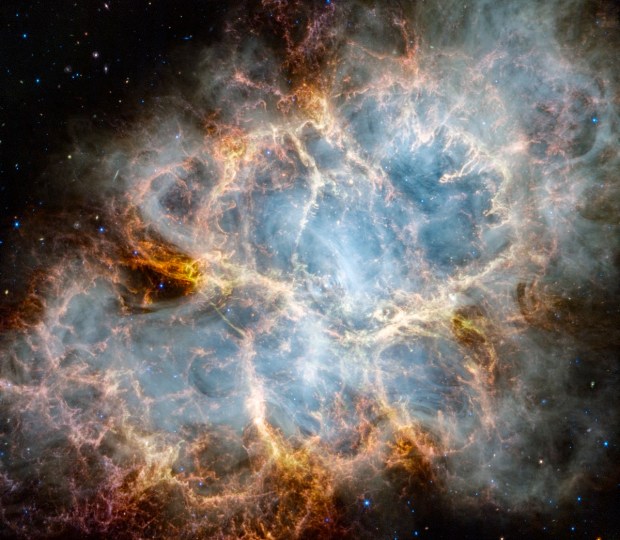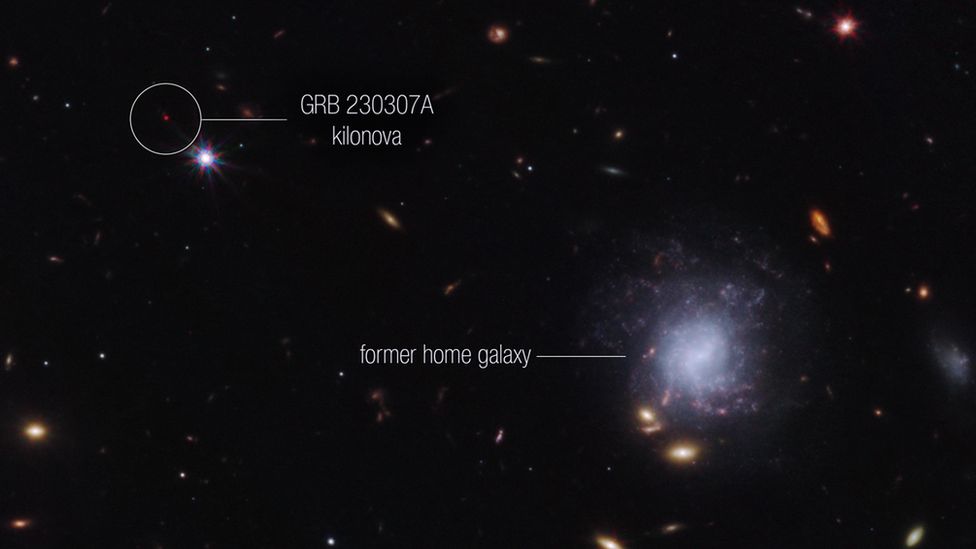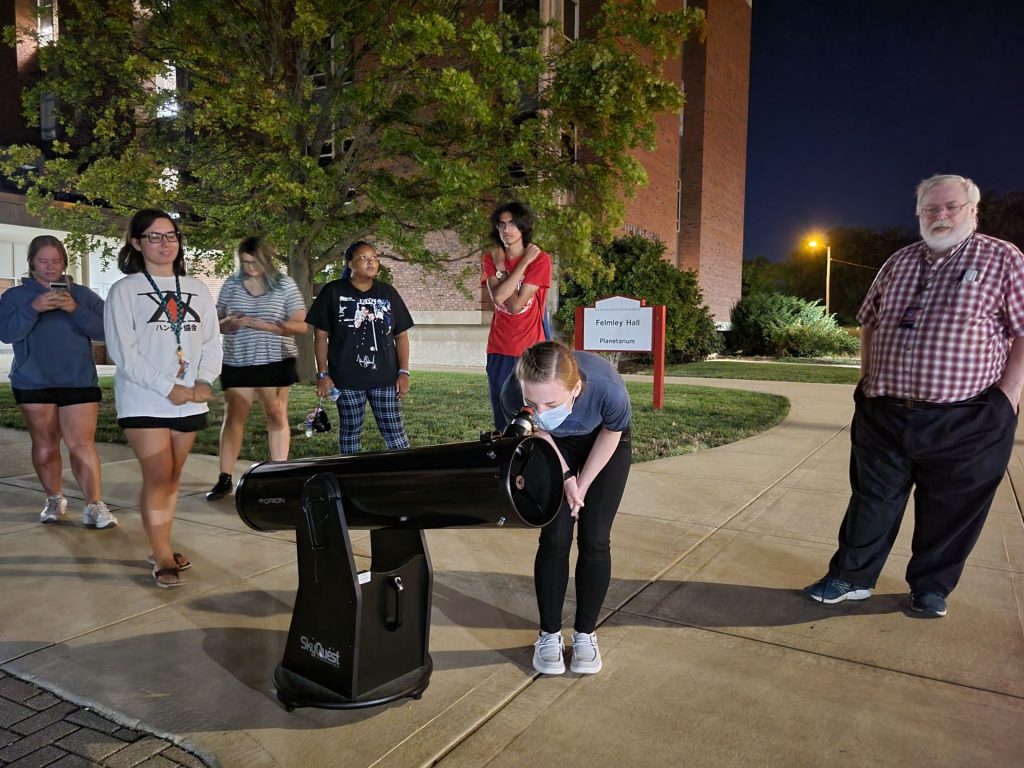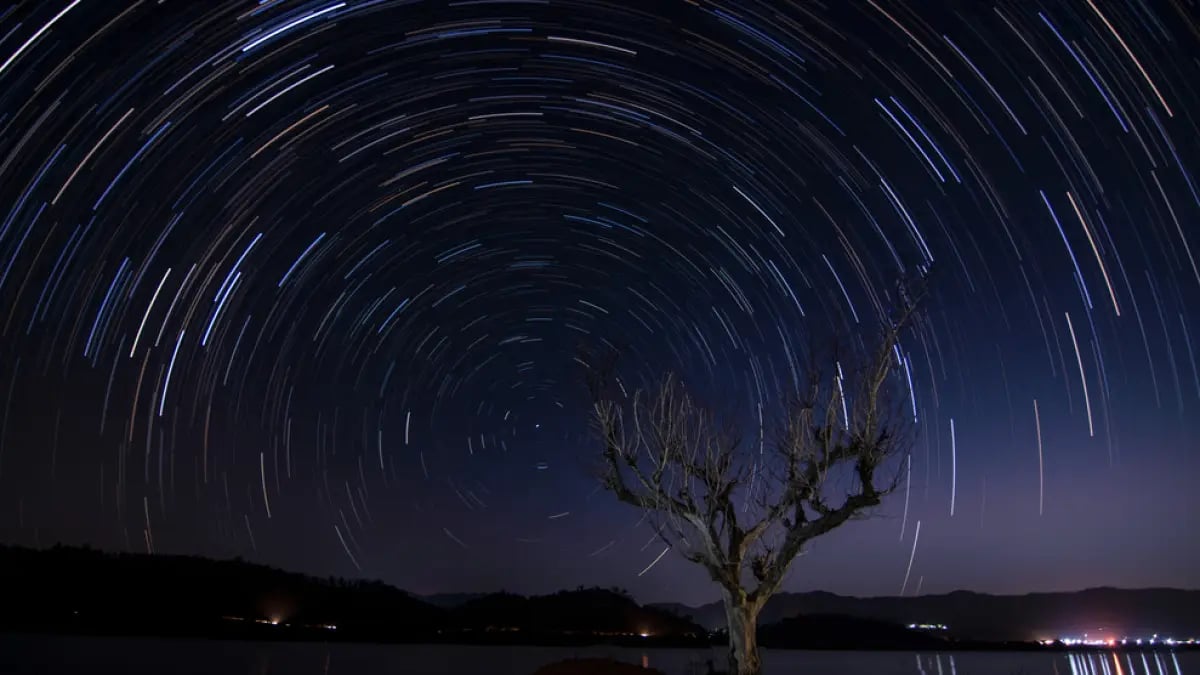-
The Crab Nebula, as we’ve never seen it before

The Crab Nebula, imaged by the Webb’s NIRCam (Near-Infrared Camera) and MIRI (Mid-Infrared Instrument) Credit: NASA, ESA, CSA, STScI, Tea Temim (Princeton University) The James Webb Space Telescope (JWST) turned its attention toward the Crab Nebula (M1) and revealed “exquisite, never-before-seen details” in this image released Oct. 30. Tea Temim and team at Princeton University used…
-
James Webb Space Telescope dives deep into the Crab Nebula supernova wreckage (video)
Using the James Webb Space Telescope (JWST), a team of astronomers has captured an unprecedented, ethereal view of the Crab Nebula. This cosmic crustacean, located around 6,500 light-years away in the constellation of Taurus, is the remnant of a supernova first recorded by 11th-century astronomers in 1054. In the modern era of astronomy, the Crab…
-
Warwick researchers use Webb telescope to analyse kilonova

NASA / ESA / CSA / STScI / Andrew Levan By David Gregory-Kumar Science, Environment & Rural Affairs, BBC News Researchers, including scientists at the University of Warwick, have been able to use the James Webb Space Telescope to analyse a kilonova for the first time. Kilonovas aren’t quite as violent as supernovas, where a…
-
Saving open space and history in one Big Bang

“Our whole universe was in a hot, dense state; Then nearly fourteen billion years ago expansion started, wait; The Earth began to cool, the autotrophs began to drool …” If you’re a fan of the Big Bang Theory television series, you probably can sing the rest of the show’s theme song lyrics – which explain, briefly and…
-
The Crab Nebula Seen in New Light by NASA’s Webb

NASA’s James Webb Space Telescope has gazed at the Crab Nebula, a supernova remnant located 6,500 light-years away in the constellation Taurus. Since the recording of this energetic event in 1054 C.E. by 11th-century astronomers, the Crab Nebula has continued to draw attention and additional study as scientists seek to understand the conditions, behavior, and…
-
Starry nights: Astronomy Club offers community for nocturnal night-gazers

Brayden Sefranek’s interest in things beyond the earth’s atmosphere was sparked at the tender age of 6 years old when his father handed him a pair of binoculars and pointed toward the night sky. “He just said, ‘Check that out,’” Sefranek recalls. That’s all it took for Sefranek to get hooked. His curiosity in the…
-
The 10 spookiest nebulas in the universe
A malevolent, screaming skull face. A witch cackling in profile. An all-seeing eye, gazing red and furious from the void of space. Like cosmic Halloween decorations, nebulas are some of the most gorgeous objects in the universe, and some of the spookiest. These vast regions of gas and dust, illuminated by starlight and sculpted by…
-
Rocks From Mars And More At The New Space Museum In Kolkata

What’s On Offer “This is a one-of-its-kind gallery because such a collection is unheard of for any other museum in India. There are many repositories with numerous exhibits dedicated to air and space, but none with so much astronomical content,” said Professor Sandip Kumar Chakrabarti, the Director of ICSP. The key exhibits include hair strands…
-
People don’t know their Uranus from Eridanus – when it comes to astronomy

People don’t know their Uranus from Eridanus – when it comes to astronomy. A poll of 2,000 adults found 49 per cent don’t know what a lunar eclipse is and 84 per cent wrongly believe the moon is round. Only 12 per cent were right in saying it is egg-shaped. While 66 per cent claim…
-
Tanzania’s astronomer takes to the cosmos

True. Both astrology and astronomy deal with celestial objects, yet their nature, aim, methodology, and scientific legitimacy are fundamentally different. Astronomy is a legitimate scientific discipline, whereas astrology is a belief system with no scientific support. Even among scientists, astronomy is widely recognised as a legitimate scientific discipline with a well-established body of knowledge and…